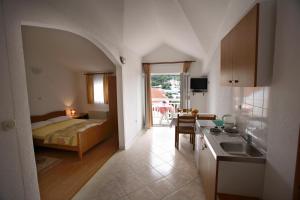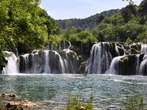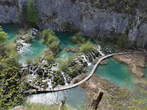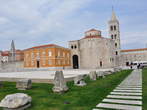Lake Zmajevo oko is located on the Gradina peninsula, on a narrow slide of land that separates the bays of Soline and Koprisce. The lake is surrounded by vertical walls 4 to 24 meters high. The surface of the lake is 10,000 m2 and the maximum measured depth is 15 meters.
The first known research of the lake was made by Professor Buljan in 1956. In it he claims that the Dragon's Eye lake was created by a cave, the roof of which broke in, which created a hole. After the ice age, about 10,000 years ago, when the sea level rose by about 100 meters, this hole filled with seawater, which found its way through underground channels and cracks. Buljan found that the lake water has toxic gases - hydrogen sulfide, which was the first such find on the eastern coast of the Adriatic Sea. He also discovered that the water is divided into layers and that there is no oxygen at a depth of more than 9 meters. Every few years, the aqueous layers mix and the water turns white. Sometimes a layer of oxygen-free water spreads all over the lake and all the organisms die off, but then it takes a few years for life in the lake to recover. The locals call this phenomenon the boiling of the lake or the raging of the lake. There are four small underwater caves on the western side of Lake Zmajevo oko. At the entrance, they are three to four meters high and decrease towards the end. The longest cave is 8 meters long. It was once thought that there was a tunnel with which the lake would be connected to the sea, but it is not. Seawater enters the lake in ten areas. The salinity of the Dragon's Eye lake is high and the temperature of the water layers fluctuates, so that the lower layer can be 5 degrees warmer than the upper one. On the surface, the lake water is green and blue, then turns yellow. At the boundaries where there is no oxygen, the water is red. From there to the bottom it is gray and dark brown so that nothing can be seen. The lake has many different inhabitants, and some species become much larger in it than in the surrounding sea. Oysters and mussels grow quite large, even much larger than the Adriatic average. Since 2010, Lake Zmajevo oko has been included in the national ecological network and part of the protected natural heritage. The Lake Zmajevo oko is one of the most important natural phenomena in this part of Dalmatia.
So far, the lake has not become a tourist attraction, but it is very popular with the locals, especially with children who like to swim in it. Before the sea is warm enough for swimming, the lake is much warmer, so the swimming season for children in Rogoznica starts very early and lasts much longer than elsewhere on the Adriatic coast.



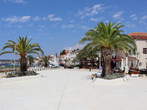


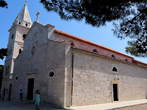


 HR-CRO - Croatia
HR-CRO - Croatia

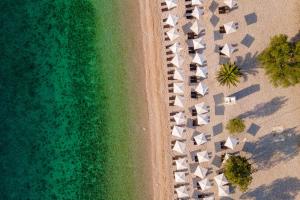
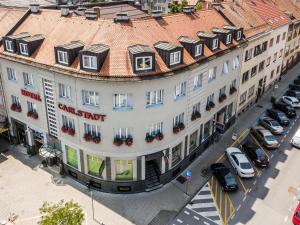













 from
from 
